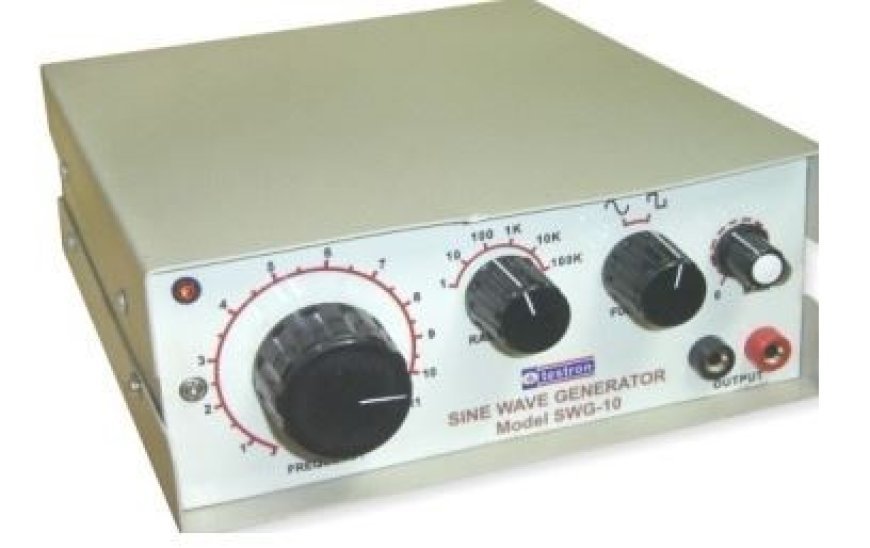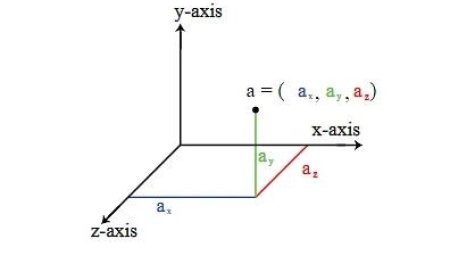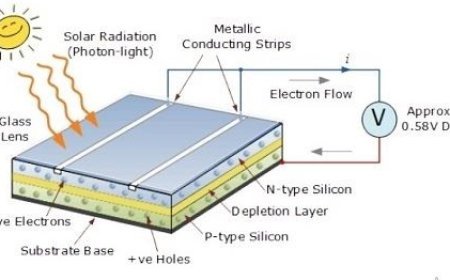SINE WAVE GENERATOR
A sine wave generator is an electronic circuit or device that produces a continuous electrical signal in the shape of a sine wave.

Sine Wave Generator
- A sine wave generator is a type of functional generator that makes a signal or pattern that looks like a sinusoid.
- The sine wave is a smooth, alternating wave that goes on and on. It is one of the most basic and easy sounds. Every 360°, the pattern goes around and around again.
- Some current sine wave makers create waveforms using digital signal processors.
- A digital-to-analog converter can be used to convert digital waves to their analog counterparts.
Construction
- As there are waves, there are also many places where they come from.
- Natural waves are more varied and complicated, and they are responsible for very important things happening in the world. This post will only talk about sine waves that are made in a lab.
- An oscillator that is set off to make waves is at the heart of this generator. A lot of signal wave makers have an oscillator that is set to the right frequency and intensity. They also have a diode-shaped circuit that is not linear.
- The generator has connections that can change all of a signal's properties.
- Modern sine wave generators are controlled by microprocessors and can be used on a computer.
- These devices can be stand-alone and self-contained, or they can be built into more complicated automatic test systems.
Operation
- The process depends a lot on the building or the different parts that are used. An AC electric power generator makes the simplest sine wave.
- Changing magnetism that cuts through conductors causes a changing induced current that has the shape of a sine wave.
- In other words, the AC power is a sine wave. This is one of the circuits used for waves made by tools.
- First, the DC source is turned on and off many times to make a square wave.
- When the switch is turned on again and again, the polarity changes, and the positive and negative cycles go back and forth.
- Any other type of wave that you can think of can be made from a square wave. An LC circuit is used to get a sine wave.
- Along with each other, the square wave goes through an inductor and a resistor. A sine wave has both positive and negative cycles.
- The exchange of energy between the capacitor and the inductor is what causes these cycles.
- The size of the capacitor and inductor determines the frequency, and the size of the square wave determines the output volume.
- The following is another way to generate. Initially, creating triangular waveforms involves repeatedly charging and discharging capacitors from a steady current source. This makes a voltage curve that goes up and down in a straight line.
- A comparator turns on and off the charging or draining as the output voltage approaches its upper or lower limits. This makes the linear triangle wave.
- If you change the capacitor's size and current, you can get different frequencies.
- By rounding off the triangle wave's corners, a non-linear diode-shaped circuit turns it into a fairly accurate sine wave. This works in a way similar to how audio systems clip.
Properties of a good sine wave generator
- It makes a sine wave that is smooth.
- The ability to make a lot of different sounds.
- A frequency steadiness of 0.1 percent per hour for analog generators and 500 parts per million (ppm) for digital generators
- An analog generator can have a maximum sinewave error of about 1% (depending on how accurate the diode shaping network is).
- Backs up It might work with frequency modulation (FM), amplitude modulation (AM), or phase modulation (PM).
- The voltage at the output can go up to 10 V from peak to peak without breaking.
- The amplitude can be changed, generally with an attenuator that has been measured and has steps of ten years and continuous adjustment within each decade.
- Allow for a DC offset voltage, such as one that can be changed from -5V to +5V.
- A 50 Ω output resistance.
What's Your Reaction?



































